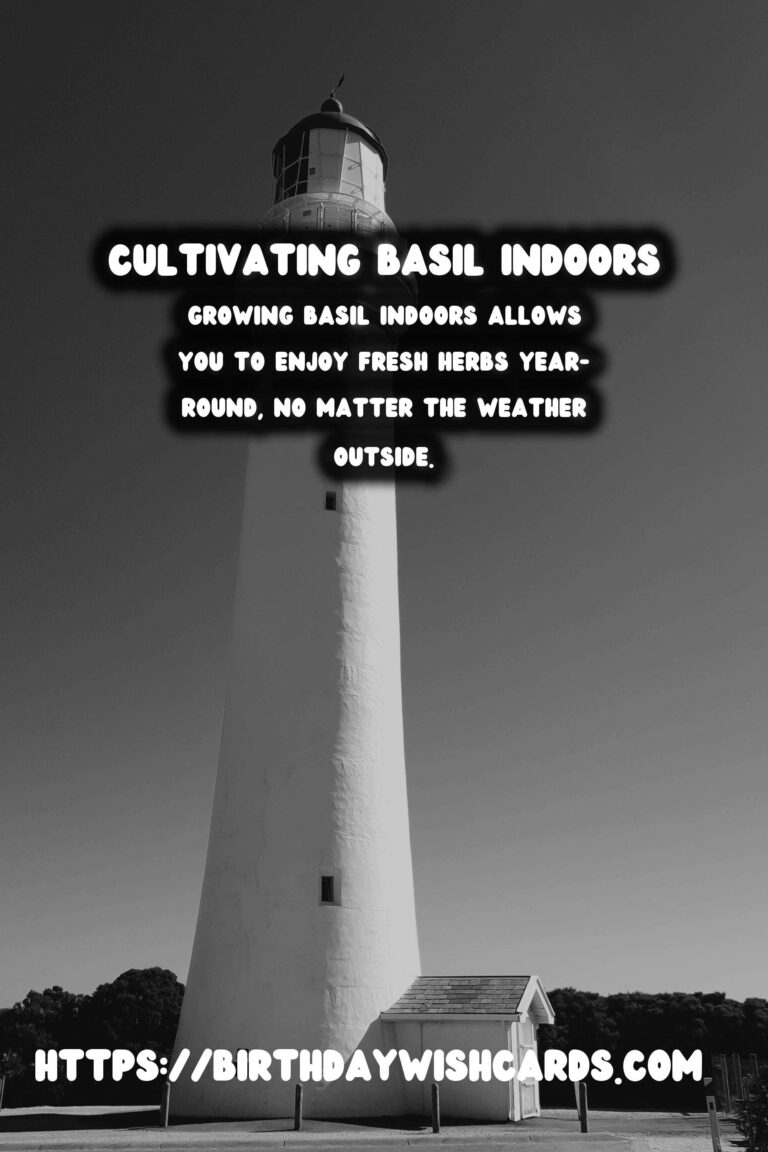
Whether you’re an aspiring gardener or simply someone who loves the taste of fresh herbs, growing basil indoors can be a rewarding and delightful experience. With its delightful aroma and versatile culinary uses, basil is an excellent choice for indoor gardening. In this comprehensive guide, we will walk you through the simple steps to ensure your basil thrives inside your home.
Why Grow Basil Indoors?
Growing basil indoors allows you to enjoy fresh herbs year-round, no matter the weather outside. It ensures a constant supply of this delicious plant for your kitchen needs. Moreover, basil adds greenery and a pleasant aroma to your home environment, making it a perfect choice for an indoor herb garden.
Choosing the Right Basil Variety
There are many varieties of basil, each with unique flavors and growing requirements. Sweet Basil (Ocimum basilicum) is the most common and versatile variety, ideal for indoor growing. Other varieties such as Greek Basil or Lemon Basil offer unique flavors and may also thrive indoors with proper care.
Getting Started: Planting Basil Indoors
To begin growing basil indoors, you’ll need a few essential supplies: seeds or starter plants, a well-draining pot, and good-quality potting mix. Step 1: Choose a Pot Select a container that provides adequate drainage to prevent overwatering. A pot that is 6-8 inches in diameter is typically suitable for one basil plant.
Step 2: Use Quality Potting Mix Fill the pot with a light potting mix that offers good aeration and nutrient retention. Avoid using garden soil as it may compact, limiting root growth.
Step 3: Planting the Seeds or Seedlings If planting seeds, sow them 1/4-inch deep in the soil, and water lightly. For seedlings, transplant them gently into the potting mix, ensuring the roots are well covered and secured in the soil.
Optimal Growing Conditions
Light Requirements Basil requires plenty of light—ideally 6-8 hours of sunlight per day. Place your basil pot in a south-facing window or use a grow light to supplement natural light, especially in winter months.
Temperature and Humidity Basil thrives in warm conditions with temperatures between 70-80°F (21-27°C). Ensure it is away from drafts and temperature extremes. Moderate humidity levels are beneficial; consider using a humidity tray or misting the plant regularly.
Watering and Feeding
Watering Basil Water basil thoroughly, ensuring that the soil is damp but not waterlogged. Allow the top inch of the soil to dry between waterings to prevent root rot.
Feeding and Fertilization Use a balanced liquid fertilizer every 4-6 weeks to promote healthy growth. Avoid over-fertilizing, as this can affect the flavor of the leaves.
Harvesting Your Indoor Basil
Regular harvesting encourages bushier growth. Pinch off the leaves from the top of the plant, just above a pair of leaves or node. Avoid removing more than one-third of the plant at a time to allow for continued growth.
Common Issues and Solutions
Common Pests Indoor basil may occasionally attract pests like aphids or whiteflies. To combat these, use organic insecticidal soap or neem oil as a natural remedy.
Diseases Overwatering can lead to diseases such as root rot or fungal infections. Ensure good air circulation and avoid overhead watering to minimize these risks.
Conclusion
With these easy steps and proper care, you’ll enjoy a thriving basil plant indoors, ready to add a fresh and flavorful touch to your culinary creations. Remember to monitor your plant’s growth regularly and make adjustments as needed to ensure a long-lasting herb garden on your kitchen windowsill.
Growing basil indoors allows you to enjoy fresh herbs year-round, no matter the weather outside. Basil requires plenty of light—ideally 6-8 hours of sunlight per day. 









#IndoorGardening #BasilGrowing




